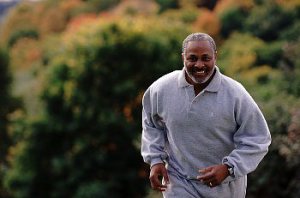While the allure of the gym — climate-controlled, convenient and predictable — is obvious, especially in winter, emerging science suggests there are benefits to exercising outdoors that can’t be replicated on a treadmill, a recumbent bicycle or a track.
You stride differently when running outdoors, for one thing. Generally, studies find, people flex their ankles more when they run outside. They also, at least occasionally, run downhill, a movement that isn’t easily done on a treadmill and that stresses muscles differently than running on flat or uphill terrain. Outdoor exercise tends, too, to be more strenuous than the indoor version. In studies comparing the exertion of running on a treadmill and the exertion of running outside, treadmill runners expended less energy to cover the same distance as those striding across the ground outside, primarily because indoor exercisers face no wind resistance or changes in terrain, no matter how subtle.
The same dynamic has been shown to apply to cycling, where wind drag can result in much greater energy demands during 25 miles of outdoor cycling than the same distance on a stationary bike. That means if you have limited time and want to burn as many calories as possible, you should hit the road instead of the gym.
But there seem to be other, more ineffable advantages to getting outside to work out. In a number of recent studies, volunteers have been asked to go for two walks for the same time or distance — one inside, usually on a treadmill or around a track, the other outdoors. In virtually all of the studies, the volunteers reported enjoying the outside activity more and, on subsequent psychological tests, scored significantly higher on measures of vitality, enthusiasm, pleasure and self-esteem and lower on tension, depression and fatigue after they walked outside.
Of course, those studies were small-scale, short-term — only two walks — and squishy in their scientific parameters, relying heavily on subjective responses. But a study last year of older adults found, objectively, that those who exercised outside exercised longer and more often than those working out indoors. Specifically, the researchers asked men and women 66 or older about their exercise habits and then fitted them all with electronic gadgets that measured their activity levels for a week. The gadgets and the survey showed that the volunteers who exercised outside, usually by walking, were significantly more physically active than those who exercised indoors, completing, on average, about 30 minutes more exercise each week than those who walked or otherwise exercised indoors…
Read More: nytimes.com
